The Mister Coffee Cafe Barista Maker is a semi-automatic espresso machine designed to make it easy to make lattes and cappuccinos at home. It has a built-in milk frother that automatically froths milk for the perfect consistency for your latte or cappuccino. The machine also has a 15-bar pressure pump which is essential to extract the full flavor of the coffee beans, giving you a rich and flavorful espresso. Below is Mr Coffee Cafe Barista Review.
Mr. coffee cafe barista Overview
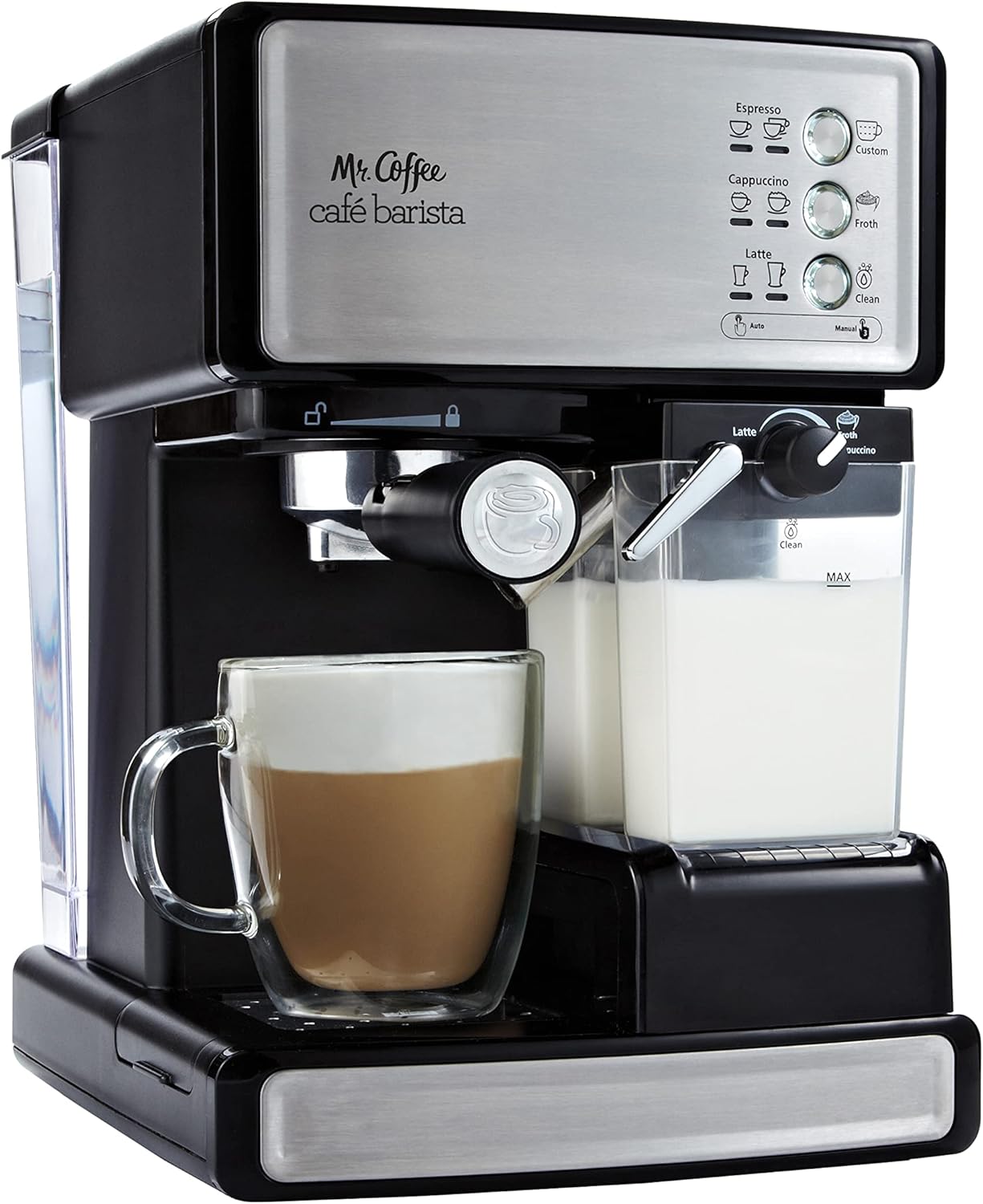
Specification
- Brand: Mr. Coffee
- Color: Silver
- Dimensions: 13.7 x 8.9 x 13.2 inches
- Material: Stainless Steel
- Filter Type: Reusable
Pros
- It is very easy to use and clean
- The automatic froth reservoir works very well as well.
- Make 2 double shots of espresso.
- Automatically makes the best cappuccino hands-free.
- Best in terms of price and the price is very low, and
- 6 ice cubes can be dropped.
Cons
- If you don’t place the milk container in just perfectly it does not work.
- The tamper is very cheap and bulky.
- Making coffee requires patience.
Mr Coffee Cafe Barista Review and premium espresso & cappuccino system
This entry-level espresso, cappuccino, and latte maker is a device with all the fundamental features for someone just getting started in the world of espresso. However, that is one of the disadvantages that come with a price that is almost impossible to exceed. It may also be incredibly erratic. Think of the Mr. coffee café barista premium espresso & cappuccino system as your first tricycle if you picture high-end espresso machines as a typical bicycle.
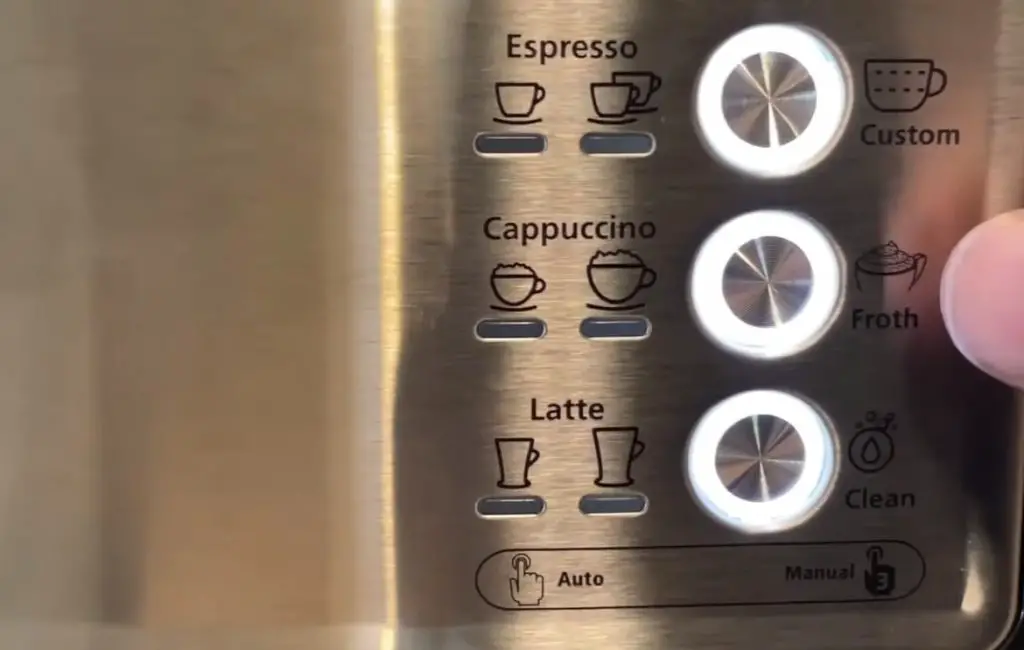
The machine is easy to use, with a one-touch control panel that lets you make your favorite drink with the push of a button. The control panel has buttons for a single or double shot of espresso, a latte, and a cappuccino. Additionally, the control panel has a button for manual frothing, which allows you to froth the milk to your desired consistency.
The machine has an easy-fill, removable water, and milk reservoir that makes it easy to fill and clean. The machine also features a pair of removable drip trays to catch any drips from the espresso, making it easy to clean as well.
Mr. coffee cafe barista espresso maker with an automatic milk frother
A unique feature of the Mr. Coffee Cafe Barista is a removable milk reservoir. Now, milk reservoirs aren’t exclusive to Mr. Coffee or even to the market for inexpensive espresso machines, but everywhere they are present, they at best have questionable value. Depending on the milk you use and your expectations, the froth might be poor to sufficient.
The automated frother does not provide the user direct, physical control over the froth, in contrast to steaming with a wand. The milk reservoir does not have any volumetric measures, which makes it challenging to monitor during frothing. As a result, you must use a measuring cup to make sure your quantities are accurate. This problem is made worse by the fact that the uniformity of the milk’s frothing and dispensing is highly dependent on the type of milk and how recently the machine has been used.
Design: Conveniently designed
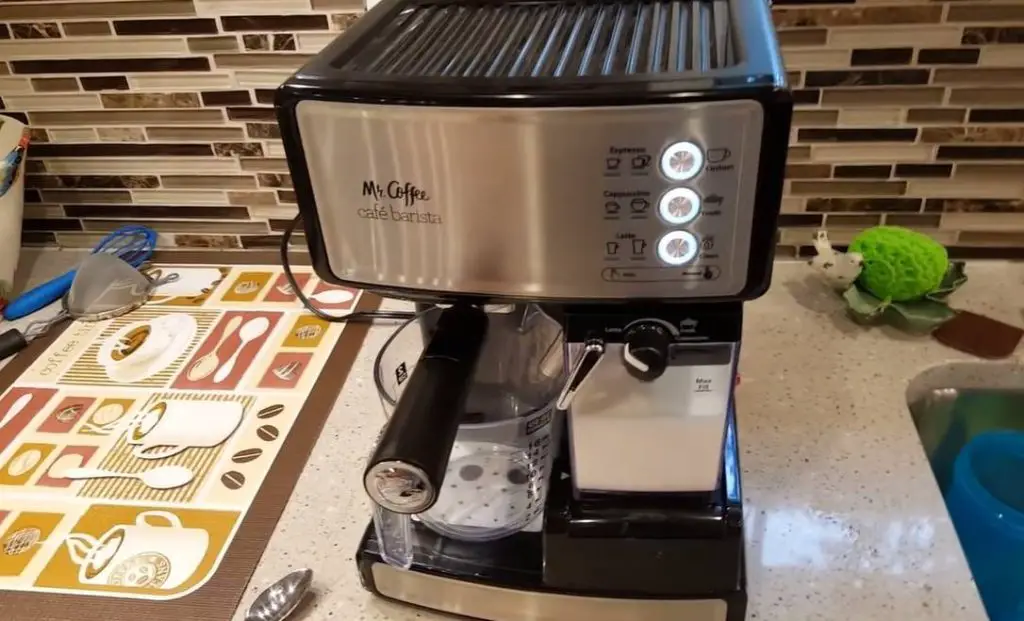
The first thing I noticed was that, like many other coffee or espresso machines in this price range, the whole interior is housed in a black plastic case for protection. The front panels of the Mr. Coffee Café Barista Semi-Automatic Espresso Maker have been upgraded with a stainless steel appearance, but they are not made of real steel, for a touch of elegance. The Rancilio Silvia is a great option if you’re looking for a commercial-grade home espresso machine, but costs several hundred more than this budget-friendly model.
You don’t need a master’s degree to use this machine because the buttons are straightforward. An espresso, cappuccino, or latte can be made with one or two presses for a single or double shot. You may also access these three extra choices by pressing a button for around 3 seconds:
- Personalize your espresso
- Add extra frothed milk
- clean espresso machine
Before you can start enjoying your espresso drinks, you need to prime your machine. It sounds complicated, but it’s very clearly described, so don’t be afraid of this challenge. Just fill the milk and water tank with water and run a couple of different cycles. That’s all.
The Mr. Coffee kit comes with a measuring spoon/tamper, a portafilter, a milk tank, a water tank with a cover, and filters for one and two drinks. Plus, you get recipes for creative espresso drinks.
Readability of the display and units
There are two sections and nine separate functions on the control panel.
The automated single- or double-shot option is located on the left side of the buttons. For manual actions like adding more foam or cleaning, use the buttons on the right side of the device.
Depending on the stage of the cycle, the green LED light that surrounds each button either glows or flashes.
Additional small icons with LEDs below that light up with each button press guide you to the espresso drink of your choice. The maximum fill line is clearly marked on both the water and milk tanks.
Push-button café
The controls on Cafe Barista are more complicated than those on standard manual espresso machines, although they are still very easy. There is a control panel with three buttons that are stacked vertically next to the power switch, which is on the lower-right edge of the device (Espresso, Cappuccino, Latte). The labels for manual tasks are on the right side of each key, while indicators for automatic drink-making modes are to the left.
A single shot will be brewed by the Cafe Barista when the “Espresso” button is pressed once; a double shot will be brewed when the button is pressed twice. The machine enters a custom-brewing mode if you hold the key down for three seconds. In this mode, water is continuously pushed through the filter until you press the key once more. With the exception that a long push starts the steaming wand or manual frothing operations for the other “Cappuccino” and “Latte” buttons, they both function in the same way.
You may also change the amount of foam in the milk you steam using a dial on the milk frother. For lattes, use the lower end of the froth range, for cappuccinos, use the higher end.
Performance
The Cafe Barista’s and its vibration pump system produced a range of outcomes when it came to extracting shots of straight espresso. With the help of the machine, I was able to create some of the taste I was looking for in the shots. One shot in particular had a flavor that was fairly robust and even had a hint of chocolate (Costco House Blend, medium-fine burr grind).
I used a refractometer to test the percentage of total dissolved solids (TDS) in the solution in my espresso to see precisely how concentrated it was. A TDS percentage of 10.1% was measured for this particular shot. While this is a decent result for espresso, a TDS number closer to 14% is required to achieve the ideal extract percentage of 20%.
With my Costco test beans, unfortunately, this was the highest TDS score I got from Cafe Barista. Other shots, drawn back-to-back, had a wide range of potencies, with TDS percentages ranging from a high of 10.1 to 8.8 and then down to 6.8. Remember that these results were obtained using a big double-shot basket that holds 0.4 ounces (11.3 grams) of coffee grinds and by pushing 1.2 to 1.4 ounces (35.5 to 41.4 ml) of water through the portafilter. Espresso with very little flavor was produced while using the recommended basket sizes.
The De’Longhi Dedica, in contrast, was able to get TDS levels of 15 to 16 percent from the same Costco roast. The espresso also had a lot more flavor to it, with lots of complexity, depth, smoke, and chocolate.
When brewing beans that had been lightly roasted, the Cafe Barista did worse. Despite the fact that my Quills Blacksmith Espresso coffee was newly roasted, the machine was unable to extract the nuanced flavors that I know it would otherwise have. The shots were overly sour instead of the flavors of pear and fruity acidity tempered by the sweetness I typically detect.
The Cafe Barista, in my opinion, has the same problems that set cheaper espresso makers apart from more expensive versions, notably a consistency in the pressure and temperature of the brewing process. In fact, throughout a brew cycle, the temperature within the portafilter fluctuated drastically between shots, reaching as high as 207 degrees F and as low as 198 degrees F (92.2 degrees C) (97.2 C). Since brewing with extremely fine grinds fully clogs the portafilter on the machine, I can’t yet test the pressure inside, but I’d imagine it isn’t that high.
The steamed milk of the Cafe Barista masked much of the bad coffee flavor, serving as a defense for the establishment. In just a few minutes, it could also make drinkable coffee and milk mixes.
The procedure of creating espresso
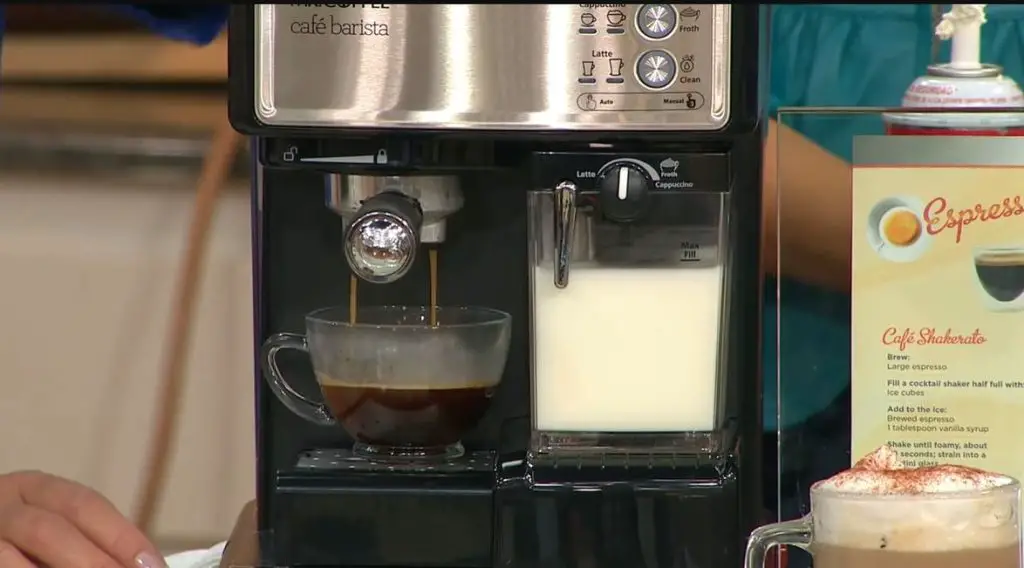
Pour some ground coffee into the Porta Filter and tamp it down with the supplied measuring spoon/tamper to make your espresso.
After that, carefully turn the portafilter till Easy appears by moving it toward the closed lock icon.
The froth control knob produces the amount of froth based on how much you turn the knob from left to right or from Latte to Cappuccino.
Not enough foam? No problem! Just press and hold the Cappuccino button for a couple of seconds and more froth is on the way.
Now all you have to do is select your preferred Espresso drink and press once for a single shot or twice for a double shot.
Type of espresso to use
If you have a grinder, you should just use beans and grind them just before use. It’s not a good idea to buy ground coffee from the shelf because most of them are probably already stale.
You can use all types of coffee, but it is highly recommended to choose a coffee that is marked as Espresso coffee.
Why? Coffee is coffee, and beans are beans?
That is correct, but espresso is often made from a combination of various coffees that can survive the higher pressure of the water that passes through them. So for the best flavor possible, use coffee that is prepared to be used for espressos.
Kind of filtering method
Both filters (One Shot + Two Shots) are included for this machine. You don’t need any other filter.
Yield for brewing
This espresso maker’s 15-bar pump, which is similar to the one on the Breville BES870XL, is one of its features. The best pressure for espresso is between 8 and 10 bars, although this machine seems to manage it well because most reviews praised the flavor of the coffee.
All of the chosen beverages are made in a minute. I thus don’t find it all that difficult to tolerate the less-than-perfect milk foam bonnet.
Mr. Coffee Café barista cleaning
In three words: cleanup is a breeze! All parts except the filter holder and water tank are dishwasher safe. I’m not sure why the water tank is, but the manual clearly says so.
Warm, soapy water should be used to clean the filter and water tank. When you use the frothing milk dispensing tube, you should run a cleaning cycle after you have finished. This technique is made simple by the Mr. Coffee Café Barista espresso machine.
First, make sure you have placed an empty cup under the foam tube and check that there is water in the reservoir. Now all you have to do is turn the froth control knob to ‘Clean’ and hold down the Latte/Clean button for about 3 seconds or until the pump turns on. Blindingly easy, right?
Conclusion
The Mr. Coffee Cafe Barista Maker is an excellent option for those looking for an easy and budget-friendly way to make cafe-style drinks at home. So put the $200 Mr. Coffee Cafe Barista on your list of wants. It’s easy to use, with a built-in milk frother and 15-bar pressure pump, and a removable reservoir and drip tray making cleaning a breeze.
Frequently Asked Questions
Is Mr. Coffee a good brand for an espresso machine?
The best choice for espresso lovers on a limited budget is the Mr. Coffee Café Espresso Machine. A few button clicks are all that is required to make your espresso fix, making it simple to use. The device contains a built-in steam wand for heating and foaming milk, as well as a frothing arm for making creamy lattes and cappuccinos.
Why is my Mr. Coffee Cafe Barista not frothing?
1. Make sure the Cappuccino or Latte set is selected on the Froth Control Knob.
2. Make sure the milk reservoir is filled with milk.
3. Make sure your cup’s center is in line with the Frothed Milk Dispensing Tube, which should be clean.
4. Make sure the milk reservoir is securely fastened.
Do I need filters for Mr. Coffee’s espresso machine?
You MUST use a reusable screened filter or a paper filter. This is not in the coffee maker.
How long is the Mr. Coffee filter usable?
The kind of water used and how frequently the coffee maker is used will determine how often the filter has to be replaced. The filter should be changed every two to three months for the majority of people.


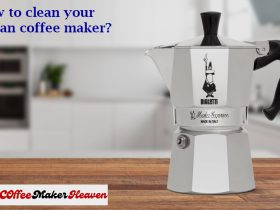
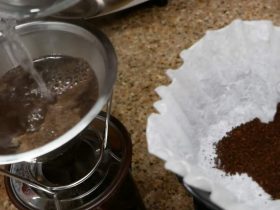
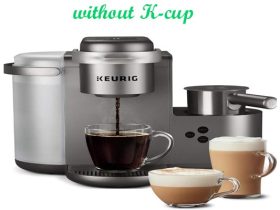
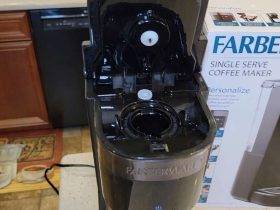

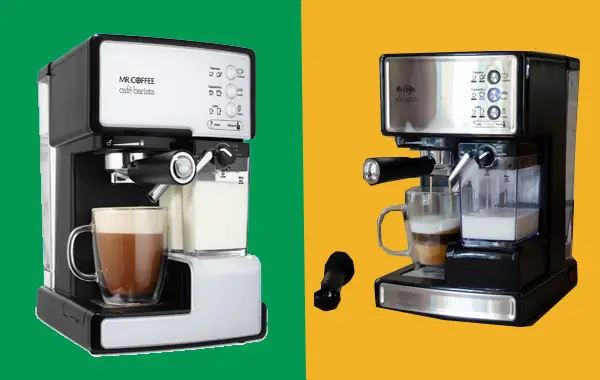

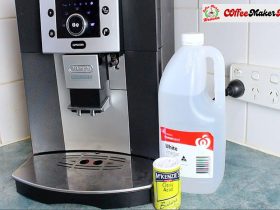

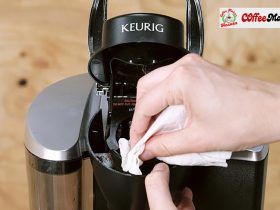
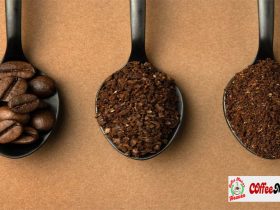
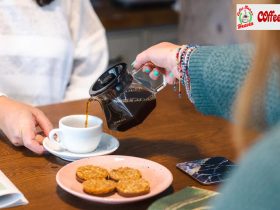




Leave a Reply